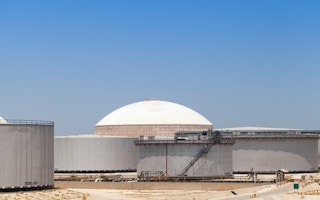Saudi Arabia, the world’s biggest oil exporter and one of the world’s top per capita emitters of greenhouse gases, has traditionally voiced little concern about climate.
So there was some surprise when, in advance of the current UN climate change summit in Paris, the country announced that it was aiming to cut back on its C02 emissions. The problem is that the pledge comes with some important caveats that seem to render the whole exercise meaningless.
More than 180 countries have so far submitted pledges – referred to in UN jargon as Intended Nationally Determined Contributions (INDCs) − to the summit to cut back on emissions of greenhouse gases.
Export revenues
Under the Saudi plan, there will be an annual cutback of up to 130 million tonnes of emissions by 2030. But they say that such cutbacks will only be made as long as there is “a robust contribution from oil export revenues to the national economy”.
They also warn that should any agreement made at the Paris talks create what is termed an “abnormal burden” on the country’s economy, then the climate-related commitments would be weakened.
Climate Action Tracker (CAT), an independent group that analyses carbon emissions across various sectors, describes Saudi Arabia’s pledges as inadequate and paradoxical.
Despite low global oil prices, Saudi Arabia has been pumping out record levels of oil. Industry analysts say the country is determined to keep its share of the oil market – and is upping production because of fears that oil prices might dip further.
Due to past lavish spending, a bloated public sector and falling oil revenues, Saudi Arabia also has to deal with an increasingly large black hole in its finances.
The analysis by CAT says that based on present levels of production, and what’s called a “high export scenario”, Saudi emissions would climb on a dizzying projectory – increasing by around 158 per cent on 2010 levels by 2030, or by 680 per cent above 1990 levels.
The Saudi pledges do not make sense in terms of emission reductions, and they also threaten the fragile environment in the Gulf region, which scientists say is at considerable risk from the effects of climate change.
“The Saudi climate plans are highly inconsistent with the projected climate impacts for the (Gulf) region, an area where average warming is higher than the global average,” CAT says.
Scientists predict that three-quarters of Saudi Arabia will suffer from excessive dryness by the end of the century and faces a water crisis.
The Gulf Co-operation Council (GCC), dominated by Saudi Arabia, has one of the biggest and most opulent stands in the environs of the vast 16-hectare site at Le Bourget that has been built for the climate summit. It is also one of the least visited.
Saudi officials on the stand point out − through impressive interactive displays − that the country has big plans for investing in renewables.
Aramco, the giant Saudi oil corporation, is working on plans to develop a car that will be capable of capturing its own carbon emissions.
Put on hold
Considerable progress has also been made on making oil production more energy efficient as a result of a new and cleaner multi-million dollar oil facility that will ensure less greenhouse gas emission from oil extraction.
Yet much heralded plans for diversifying the economy away from oil have come to nothing. Many renewables investments have been put on hold, and oil exports still make up 90 per cent of total government revenues.
It seems the Saudis just can’t, or don’t want to, break the oil habit. If they don’t, the consequences could be dire − not just for the regional and global environment but also for the country’s economy. The Saudis themselves admit that existing oil supplies are likely to run out by 2040.
In the meantime, the country that already has one of the world’s highest rates of per capita energy consumption is likely to triple its energy requirements – which will mean a big drop in oil export revenues, and even more trouble with finances.










